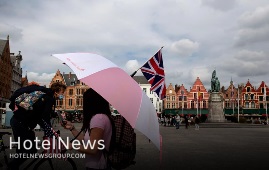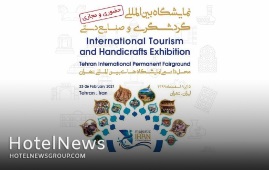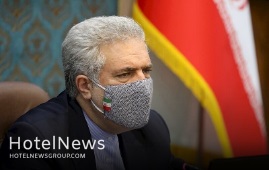
LOT Polish Airlines, the flag carrier of Poland, aims to drive forward its recovery by placing an even larger focus on tourism in the upcoming months. It is hoping to boost ticket sales via its “Lot na wakacje” (“vacation flight”, with “LOT” meaning “flight”) promotion, but it is also launching cooperation agreements with travel agencies. The pandemic changed LOT Polish’s business model Up until its entire business model came to a standstill last year, LOT Polish Airlines was consistently solidifying its position as a transfer airline in Eastern Europe. It did so via its primary hub in the Polish capital, Warsaw Chopin Airport, and its secondary hub in the capital of Hungary, Budapest Ferenc Liszt International Airport. A fundamental feature of this model was LOT’s reliance on passengers who traveled on its services into and out of Warsaw, and to a lesser extent Budapest, but whose journeys did not actually originate or end in either of these two cities. The transfer model looked promising: LOT Polish was profitable, expanding continuously for several years, and it even intended to buy German airline Condor.
Create: Jan 30, 2021 Edit: Jan 30, 2021 International News
Qatar Airways has announced a temporary suspension on accepting new bookings from UAE to the United Kingdom. In a statement on Twitter, Qatar Airways said: "Qatar Airways has temporarily suspended acceptance of new bookings from UAE for the next 7 days due to UK government concerns." In the same tweet, Qatar Airways also stated that South Africa and Rwanda are also temporarily suspended with exceptions including GCC nationals as well as resident permit holders returning to other GCC countries. Furthermore, Qatar Airways also mentioned that "acceptance of previously booked passengers will be dependent upon COVID-19 protocols and government permission to enter the country of their final destination."
Create: Jan 30, 2021 Edit: Jan 30, 2021 International News
United Airlines said on Friday it has sent warnings of potential furloughs to some 14,000 employees whose jobs are at risk once a second round of payroll support for airlines expires on April 1, as demand for air travel has been hard hit by the coronavirus pandemic. Chicago-based United had recalled 13,000 employees from furlough when the fresh payroll package was passed in December. “Despite ongoing efforts to distribute vaccines, customer demand has not changed much since we recalled those employees. today,” United told employees, while saying it was monitoring demand and advocating for continued government support. Congress approved $15 billion in new payroll assistance in December to help keep more than 32,000 airline workers on payrolls through March 31, after awarding $25 billion in March for passenger airlines in payroll assistance and $25 billion in low-cost government loans. American Airlines, which had furloughed 19,000 workers in October, did not immediately comment on Friday on whether it would issue new notices of potential layoffs. On Thursday, Sara Nelson, president of the Association of Flight Attendants-CWA (AFA), representing workers at 17 airlines, urged Congress to extend a passenger airline payroll assistance program for a third time. United’s Friday memo said “we’re continuing to monitor demand and advocate for continued government support, and we are all working hard toward the day when we can bring back our furloughed co-workers permanently.” American Airlines chief executive Doug Parker said on Thursday that “April 1 is approaching and demand hasn’t gotten much better… So we are definitely going to need to address this, unless demand starts to pick up.”
Create: Jan 30, 2021 Edit: Jan 30, 2021 International News
Some 41 tourism-related projects are currently underway across Iran’s southwestern Kohgiluyeh and Boyer-Ahmad province, the provincial tourism chief has said. These projects will boost tourism and develop travel infrastructure in the region when they finally come on stream, Majid Safai announced on Thursday. A four-star hotel and a water park are among the important projects being carried out in collaboration with the private sector, the official added. He also noted that with the inauguration of the mentioned projects, more job opportunities will be created in the tourism sector, which will lead to better income for the locals. Last September, a provincial tourism official announced that over one trillion rials (some $24 million at the official exchange rate of 42,000 rials per dollar) was allocated to nine tourism projects across the province. He also mentioned that developing tourism infrastructure in the province is one of the province’s tourism department priorities and is being pursued seriously. The lesser-known is home to various nomads and is a top destination for those interested in visiting in person the nomadic life. Sightseers may live with a nomadic or rural family for a while or enjoy an independent stay and assist them with day-to-day life. It also opens up an opportunity to feel rustic routines, their agriculture, traditions, arts, and culture. The province attracted over four million people, mostly domestic travelers, during the Iranian year 1397 (ended March 2019), according to data announced by the provincial tourism department.
Create: Jan 30, 2021 Edit: Jan 30, 2021 Regional News
Global tourism suffered its worst year on record in 2020, with international arrivals dropping by 74% according to the latest data from the World Tourism Organization (UNWTO). Destinations worldwide welcomed 1 billion fewer international arrivals in 2020 than in the previous year, due to an unprecedented fall in demand and widespread travel restrictions. This compares with the 4% decline recorded during the 2009 global economic crisis. According to the latest UNWTO World Tourism Barometer, the collapse in international travel represents an estimated loss of USD 1.3 trillion in export revenues - more than 11 times the loss recorded during the 2009 global economic crisis. The crisis has put between 100 and 120 million direct tourism jobs at risk, many of them in small and medium-sized enterprises. Due to the evolving nature of the pandemic, many countries are now reintroducing stricter travel restrictions. These include mandatory testing, quarantines and in some cases a complete closure of borders, all weighing on the resumption of international travel. At the same time, the gradual rollout of a COVID-19 vaccine is expected to help restore consumer confidence, contribute to the easing travel restrictions and slowly normalize travel during the year ahead. UNWTO Secretary-General Zurab Pololikashvili said: “While much has been made in making safe international travel a possibility, we are aware that the crisis is far from over. The harmonization, coordination and digitalization of COVID-19 travel-related risk reduction measures, including testing, tracing and vaccination certificates, are essential foundations to promote safe travel and prepare for the recovery of tourism once conditions allow."
Create: Jan 29, 2021 Edit: Jan 29, 2021 International News
In the wake of the coronavirus pandemic, global tourism had its worst year ever in 2020, with international arrivals down 74% compared to 2019. According to the United Nations World Tourism Organization (UNWTO), the drop meant $1.3 trillion less in revenues, which is 11 times more than the drop caused by the 2009 economic crisis. The U.N. said the drop in global tourism has put between 100 and 120 million tourism jobs at risk. The outlook for a rebound is cloudy. “While much has been made in making safe international travel a possibility, we are aware that the crisis is far from over,” UNWTO Secretary-General Zurab Pololikashvili said in a statement. All world regions saw a drop in tourism, with Asia and the Pacific leading with an 84% decrease. The Middle East and Africa saw drops of 75%. Europe declined by 70%, and the Americas saw a dip of 69%. According to the U.N., 45% of its panel of experts predict a better year in 2021, while 25% say 2021 will be about the same, and 30% saying 2021 will be worse. “Looking ahead, most experts do not see a return to pre-pandemic levels before 2023,” the U.N. wrote in a news release.
Create: Jan 29, 2021 Edit: Jan 29, 2021 International News
Hyatt Hotels Corporation (NYSE: H) announced today that a Hyatt affiliate has entered into franchise agreements with Story Hotels Holding AB to bring three hotels in Sweden under the JDV Hotel brand, helping to grow Hyatt's independent collection brand in Europe. The three boutique hotels – Story Hotel Riddargatan and Story Hotel Signalfabriken in Stockholm, as well as Story Hotel Studio Malmö, Sweden – will all retain their individual hotel names and unique identities. The three Story Hotels will be available for reservation through Hyatt's booking channels and for World of Hyatt members to earn and redeem points for stays starting April 1, 2021. Hyatt's independent collection portfolio is a collection of brands that not only embrace the locations in which each hotel resides, but serve as a gateway to some of the most sought-after destinations worldwide. Each property brings a sense of place to the guest experience in new and unforgettable ways. "We are very excited to bring these three Story Hotels in Europe under Hyatt's JDV Hotel brand portfolio and at the same time grow the Hyatt hotel footprint in Sweden," said Felicity Black-Roberts, vice president development for Europe at Hyatt. "We are focused on thoughtful growth in locations that meet our guests and members needs, and the upcoming addition of three Story Hotels help us fuel this growth in markets like Scandinavia, as we collaborate with owners who want to maintain each property's unique identity. With their strong design focus and neighborhood feel, Story Hotels will be the perfect representation of Hyatt's independent collection in Europe." Story Hotel Riddargatan, Story Hotel Signalfabriken and Story Hotel Studio Malmö are ideally located at the heart of their destinations and each will celebrate the unique neighborhoods in which the properties reside. With modern, Scandinavian design that reflects the edgy nature of both cities, the hotels will offer amenities for both business and leisure travelers. "It was clear at an early stage that Hyatt and Story Hotels had a very similar vision of how modern upscale living should look and feel," said Staffan Åkerlind, CEO Story Hotels. "We are thrilled to introduce the JDV Hotel brand to Europe and Scandinavia and, we are proud to be working with such an experienced, international hospitality company like Hyatt. We look forward to leveraging their experience to offer excellent service to our guests and benefit from their global scale and distribution platform." All three hotels will feature individually designed boutique guestrooms, vibrant public spaces and food and beverage offerings popular with both visitors and locals alike. Boutique in size as a reflection of their urban locations, each hotel will offer complimentary access to local gyms during their stay. Story Hotel Riddargatan, Stockholm An 83-room property widely believed to be one of Stockholm's original boutique hotels, the Story Hotel Riddargatan will have an industrial design to represent the building's former life as an apartment complex, barber shop and garage. The property is centrally located in the Östermalm area with easy access to vibrant neighborhood restaurants, cafés and bars as well as the high-end shopping district. The hotel will also feature a restaurant, Ling Long, specializing in Southeast Asian cuisine, and one indoor and one outdoor bar. Story Hotel Signalfabriken, Stockholm Story Hotel Signalfabriken will feature 83 individually designed guestrooms and a vibrant bar and restaurant, which will host regular DJ performances. Formerly a fire station and town hall, this listed property in Sundbyberg's Torg neighborhood will attract business travelers with meetings in the surrounding areas of Solna, Bromma and Kista. Leisure guests will enjoy the small town feel and abundance of restaurants nearby with quick access to Stockholm's city center in less than ten minutes via the nearby tram, bus and subway lines. Story Hotel Studio Malmö Story Hotel Studio Malmö will feature 95 unique guestrooms, all creative and playful in their design to reflect the young and vibrant population of the city. Situated on the top floors of a high-rise building, the hotel offers spectacular views overlooking the city and water. The hotel is part of the mixed-use STUDIO building, which also houses conference and meeting facilities, corporate offices, retail outlets, several restaurants and a café. With its unique waterside location at Universitetsholmen, and close proximity to Malmö's central station, guests can easily explore the city, and nearby Copenhagen via a 35-minute train ride. The hotel's restaurant and cocktail bar, Kasai in the Sky, will deliver food and drink on Malmö's highest outdoor terrace with views of the ocean and city skyline. Story Hotel Riddargatan, Story Hotel Signalfabriken and Story Hotel Studio Malmö are expected to increase the number of Hyatt hotels in Sweden to four, following the 2020 opening of Stockholm's Hotell Reisen, which is part of The Unbound Collection by Hyatt brand. Fueled by guests' growing desire for unique, differentiated experiences that foster genuine connections with people and cultures, Hyatt recently announced its intention to grow by more than 30 percent in Europe, with a significant focus on developing the footprint of its lifestyle brands.
Create: Jan 29, 2021 Edit: Jan 29, 2021 International News
Tehran will be playing host to an international tourism and handicrafts exhibition next month. The event is scheduled to be held on both virtual and physical basis at Tehran Permanent International Fairgrounds from February 23 to 26, the deputy tourism minister Vali Teymouri announced on Wednesday, CHTN reported. The event will be held according to health protocols announced by the National Headquarters for Coronavirus Control, and following the necessary coordination with the relevant agencies in this field, Teymouri said. Optimistic forecasts, however, expect Iran to achieve a tourism boom after coronavirus contained, believing its impact would be temporary and short-lived for a country that ranked the third fastest-growing tourism destination in 2019. The latest available data show eight million tourists visited the Islamic Republic during the first ten months of the past Iranian calendar year (started March 21, 2019). . Iran welcomed some 7.8 million foreign nationals a year earlier, achieving a 52.5 percent increase year on year. Iran expects to reap a bonanza from its numerous tourist spots such as bazaars, museums, mosques, bridges, bathhouses, madrasas, mausoleums, churches, towers, and mansions, of which 24 being inscribed on the UNESCO World Heritage list. Rooted in ancient Persian civilization, the nation that has survived numerous alien invasions and natural disasters over its rich history while maintaining its appeal to local and foreign tourists.
Create: Jan 28, 2021 Edit: Jan 28, 2021 Regional News
Iranian tourism minister has hailed the impact of handicrafts businesses on the economy of the country, saying its results are now evident on people's jobs and their livelihoods. “Unlike large projects and businesses, whose economic outcomes mostly appear in the long run, the impact of small businesses is now visible [in the field of handicrafts]” Cultural Heritage, Tourism, and Handicrafts Minister Ali-Asghar Mounesan said on Monday. Paying attention to the small businesses will lead to justice and the fair distribution of wealth, the official added. However, comparing small businesses with large investments is short-sighted as the small businesses receive the least support, while balancing these two fields seems important as well, he explained. While large businesses are mostly financed by the government, small businesses help improve people’s economy therefore the latter needs special attention, the minister said. Elsewhere in his remarks, Mounesan said that the small businesses in the field of handicrafts could be created with a small amount of investment, which could be a solution for one of the most important issues in the country, which is unemployment. To support artisans and crafters as much as possible, commercializing of handicrafts has been started which is expected to have a good effect on the hand-made products’ marketing and sales, he added. Earlier this week, the minister said that the sale of handicrafts is partly related to the prosperity of tourism and the presence of foreign tourists in the country. He also said that the national budget bill for the next calendar year (starting on March 20) has proposed 70 trillion rials (about $1.7 billion) to support tourism businesses affected by the coronavirus pandemic. With 14 entries, Iran ranks first globally for the number of cities and villages registered by the World Crafts Council, as China with seven entries, Chile with four, and India with three ones come next. In January 2020, the cities of Shiraz, Malayer, and Zanjan and the village of Qassemabad were designated by the WCC- Asia Pacific Region, putting Iran’s number of world crafts cities and villages from ten to 14. Shiraz was named a “world city of [diverse] handicrafts”. Malayer was made a global hub for woodcarving and carved-wood furniture. Zanjan gained the title of a “world city of filigree”. And Qassemabad village, which is nationally known for its traditional costumes, was also promoted to a world hub of handicrafts. Chador Shab, a kind of homemade outer-garment for women, was, however, the main subject for the WCC assessment for the village. Back in May, deputy tourism minister Pouya Mahmoudian said that some 295 fields of handicrafts are currently practiced across Iran with more than two million people engaging, the majority of whom are women. She also noted that handicrafts play an important role in the economy in rural areas. Iran exported $523 million worth of handicrafts during the past calendar year 1398 (ended March 19). Of the figure, some $273 million worth of handicrafts were exported officially through customs, and about $250 million was earned via suitcase trade (allowed for customs-free and tax-free transfer) through various provinces, according to data provided by the Ministry of Cultural Heritage, Tourism and Handicrafts. Ceramics, pottery vessels, handwoven cloths as well as personal ornamentations with precious and semi-precious gemstones are traditionally exported to Iraq, Afghanistan, Germany, the U.S., the UK, and other countries.
Create: Jan 28, 2021 Edit: Jan 28, 2021 Regional News
Hyatt announced today that a Hyatt affiliate has entered into a management and related agreements with ESTMA HPT OU for the first Hyatt-branded hotel in Estonia, Hyatt Place Tallinn. Expected to open in early 2023, the 168-room select service hotel will be located near the Old City Harbor, one of the busiest passenger ports in Europe. Situated in Estonia’s capital and cultural hub, Hyatt Place Tallinn will be near Tallinn’s picturesque Old Town, which is recognized as an UNESCO World Heritage site. The surrounding neighborhood is set to undergo a large-scale renewal project and once complete, is expected to bring more business and entertainment experiences to the area. The Linnahall, a former sports and cultural venue, is included in this revitalization project and will be converted into a concert hall and conference center near the planned location of Hyatt Place Tallinn. “We are thrilled to announce plans for the first Hyatt-branded hotel in the Baltics as we continue to prioritize thoughtful growth in locations that matter most to our guests, World of Hyatt members, customers and owners,” said Takuya Aoyama, vice president of development for Europe and Africa, Hyatt. “Hyatt Place Tallinn will cater to the growing leisure and business demand in Estonia and deliver seamless experiences to help guests get the most out of their stay.” In addition to offering 168 guestrooms, Hyatt Place Tallinn will feature the Zoom restaurant and a lobby bar, a fitness center and flexible event spaces. Hyatt Place Tallinn’s central location, modern facilities, and flexible service offerings will be particularly suited for visitors seeking approachable, unexpectedly elevated experiences through thoughtful and intuitive design. “We look forward to collaborating with Hyatt on Hyatt Place Tallinn,” said Galina Ignatenko, owner of ESTMA HPT OU. “As the largest city and the capital of Estonia, Tallinn has established itself as a dynamic and entrepreneurial destination for travelers across Europe, making it a natural fit for the Hyatt Place brand.” Hyatt Place Tallinn will join the growing Hyatt Place portfolio in Europe, which currently includes Hyatt Place London Heathrow Airport, Hyatt Place West London Hayes, Hyatt Place Amsterdam Airport, Hyatt Place Frankfurt Airport, Hyatt Place Yerevan and Hyatt Place Paris Charles de Gaulle Airport. Additional Hyatt Place hotels under development in European destinations include Hyatt Place Cannes, Hyatt Place Rouen, Hyatt Place Krakow, Hyatt Place Zurich Airport The Circle and Hyatt Place London City East.
Create: Jan 27, 2021 Edit: Jan 27, 2021 International News
A total of five tourism-related projects are scheduled to be inaugurated in southwestern Bushehr province, the deputy provincial tourism chief has said. Two hotels, a tourist complex, an eco-lodge unit, and a traditional restaurant will come on stream by the end of the current Iranian month of Bahman (February 18), Sakineh Salari said on Monday. A budget of 2.1 trillion rials ($50.5 million at the official exchange rate of 42,000 rials per dollar) has been allocated to the projects, which will generate over 127 job opportunities for the locals, she noted.She also noted that as the province enjoys several natural and historical attractions, establishing such centers and providing needed services will attract more domestic and foreign tourists to the region. Last April, the provincial tourism chief Mohammad-Hossein Arastuzadeh announced that the tourism sector of the province is ready to jumpstart after the coronavirus crisis ends. He also stressed that the province needs innovative plans and programs to attract more tourists and travelers to its tourist attractions and historical sites.With over 6,000 years of history and significant monuments from the Elamite, Achaemenid, Parthian, and Sassanid eras, Bushehr Province is one of Iran’s most important historical centers.Besides its cultural heritage, beautiful beaches and lush palm groves make it an attractive destination for world travelers.The historical and architectural monuments of Bushehr include Islamic buildings like mosques and praying centers, mansions, old towers, castles, as well as gardens.When it comes to cultural attractions, there are many historical mounds in Bushehr including Tall-e Khandaq with Sassanid architectural style, Tall-e Marv located near an Achaemenid Palace, and Qajar era Malek al-Tojar Mansion. Qajar era Kazeruni Mansion, which has been inscribed on the World Heritage List, is another attraction that world travelers love to see among various ancient sites.
Create: Jan 27, 2021 Edit: Jan 27, 2021 Regional News
Iran’s tourism industry has suffered a loss of over 140 trillion rials (about $3.33 billion at the official exchange rate of 42,000 rials per dollar) since the outbreak of the coronavirus pandemic, Cultural Heritage, Tourism, and Handicrafts Minister has said. Although the worldwide outbreak of COVID-19 has brought the whole world to a standstill, the tourism industry has been the worst affected of all economic sectors, IRNA quoted Ali-Asghar Mounesan as saying on Sunday. However, efforts are being made by the government to help the tourism sector flourish again with continuous support and injecting supportive packages, he added. The government has allocated a total of 500 trillion rials (about $12 billion) to the corona-affected sectors, of which 200 trillion rials ($4.7 billion) will be given to the health ministry and the rest will be spent on other sectors, he explained. Earlier this week, the minister announced that the national budget bill for the next calendar year (starting on March 20) has proposed 70 trillion rials (about $1.7 billion) to support tourism businesses affected by the coronavirus pandemic. If the budget receives parliament’s approval, it will be spent on different sectors of the tourism industry, which has taken a major hit from the coronavirus outbreak over the previous months, he noted. Despite the toughest economic pressures and sanctions, the government has provided good support to all sectors of tourism, the minister said.However, there is hope that the beginning of mass vaccination against the coronavirus will provide better conditions for tourism and businesses related to this sector, he explained.Government’s care and support packagesIn late October, deputy minister Vali Teymouri announced that a new support package to pay loans to businesses affected by the coronavirus pandemic has been approved.Depending on the type and activity of the businesses, they could benefit from at least 160 million rials ($3,800) to nine billion rials ($214,000) of bank loans with a 12-percent interest rate, he said.The loans will be allocated to tourist guides, travel agencies, tourism transport companies, tourism educational institutions, eco-lodges and traditional accommodations, hotels, apartment hotels, motels, and guesthouses as well as traditional accommodation centers, tourism complexes, and recreational centers, the official explained.In September, Teymouri pointed to the 1.3 million tourism workers in the country, who are facing several issues due to the coronavirus crisis and said “This number, in addition to their households, includes a significant population that makes a living through tourism, who are needed to be considered in ministry’s decisions.”Back in August, Teymouri announced that the tourism ministry has approved a total budget of 4,920 billion rials (over $117 million) to support corona-affected tourism businesses, covering as much as 36,000 people working in the tourism sector.Tourism industry in critical situationIn October, Mounesan warned that Iran’s cultural heritage and tourism will be in a critical situation if the crises caused by the outbreak of the coronavirus continue.In August, the minister said that Iran’s tourism has suffered a loss of 12 trillion rials (some $2.85 billion) since the outbreak of the coronavirus pandemic.He also noted that the coronavirus pandemic should not bring traveling to a complete standstill. “Corona is a fact, but can the virus stop tourism? Certainly not. For us, the coronavirus is a new experience in dealing with crises that teaches tourism experts around the world how to deal with such a disaster, and thankfully governments are turning this into an opportunity for better planning.”Last April, the government announced it will support those who are grappling with fiscal problems by offering loans with a 12-percent interest rate. The Ministry of Cultural Heritage, Tourism and Handicrafts also suggested a rescue package for tourism businesses. The government has also allocated a 750-trillion-rial (about $18 billion) package to help low-income households and small- and medium-sized enterprises suffered from coronavirus concerns.Coronavirus may turn tourism into luxury itemIn June, the United Nations World Tourism Organization praised efforts made by Iran’s tourism ministry to manage the travel industry during the coronavirus pandemic. UNWTO Secretary-General Zurab Pololikashvili said in a letter to Mounesan that the country's measures have truly earned plaudits to mitigate the impact on tourism. “A series of measures that the Ministry of Cultural Heritage, Tourism and Handicrafts of Iran has taken, in accordance with the guidelines and recommendations of UNWTO, has truly earned plaudits as an effective practice to mitigate the impact on tourism,” the letter reads.Some experts believe that the coronavirus pandemic may turn tours and travels into luxury items as observing health protocols will raise the cost of travel in the country. Mohammad Ali Vaqefi, the vice president of the Iranian Tour Operators Association, warned that with the continuation of the coronavirus outbreak, tourists may prefer individual travel rather than tours, adding that they may also choose to go on a trip by their vehicles and stay in tents or in nature instead of hotels.In the global scene, part of the new travel puzzle is the jet-set mindset focusing on tough hygiene care and social distancing as cardinal guidelines for slowing the spread of the virus. So the average expenditure will be raised for a typical traveler particularly inbound passengers so lesser ones can afford to buy privacy and space and safer travel amenities.Iran expects to reap a bonanza from its numerous tourist spots such as bazaars, museums, mosques, bridges, bathhouses, madrasas, mausoleums, churches, towers, and mansions, of which 24 being inscribed on the UNESCO World Heritage list. Under the 2025 Tourism Vision Plan, it aims to increase the number of tourist arrivals from 4.8 million in 2014 to 20 million in 2025. The latest available data show eight million tourists visited the Islamic Republic during the first ten months of the past Iranian calendar year (started March 21, 2019).
Create: Jan 27, 2021 Edit: Jan 27, 2021 Regional News
